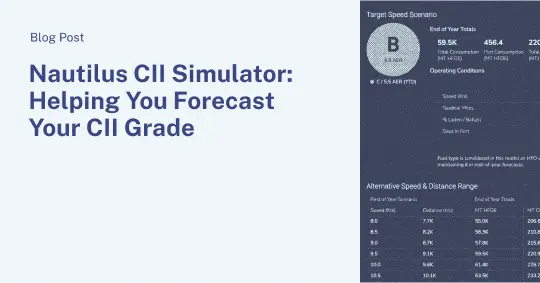Volatility in shipping is nothing new to vessel owners. In fact, savvy owners understand that to be profitable in this business is to ride the cyclical ups-and-downs of the market, responding deftly to paradigm shifts in capacity of global fleets, propulsion trends, and the regulatory environment.
However, as competition in the global marketplace steadily increases and over-capacities of tonnage became the new norm, profitability for even the most experienced shipowners has been pushed into, and decided by, operation within the margins. And when the success of the business lies in margins, even long-foreseen, market-moving events in the industry like IMO 2020 pose as serious challenges for shipowners to overcome; unpredictable disruptions like COVID-19 can be crippling. For these reasons, it is critical that vessel owners and operators take every step to maximize efficiency and leave no money on the table.
Today, the most effective way to combat any perceived obstacles of market uncertainty and ever-narrowing operating margins is through maximization of technical performance.
Unfortunately, even here shipowners’ options are limited relative to the competition—it seems that every vessel owner has taken advantage of incredible economies of scale, the latest energy-efficient engines, and novel energy savings devices. Even vessel lifespans are shrinking as shipowners move quickly to scrap tonnage in favor of newer, more efficient fleets.
So how can a vessel owner get a leg up on the competition?
Minimizing vessel inefficiency does not begin and end with the utilization of specialized energy-efficient power plants onboard. Rather, true cost savings and performance maximization lie within optimization of the efficient operation of these plants. Unfortunately, quantifying and tracking the efficiency of operation of onboard generator plants has traditionally been done using limited manual noon data—the reporting standard in shipping for decades. Although these snapshots have provided once-a-day observations, they have never (and never will) take into account and track the real-time power demands and associated observed generator configurations needed for actionable generator plant optimization.
To maximize power generation efficiency aboard your ship, real-time high frequency data is a must.
With high frequency power demand and generator data, Nautilus Labs offers optimization of any shipboard generator plant. Generator optimization increases total plant fuel efficiency and reduces engine hours by determining the most efficient configuration of online generators required for a given power demand—the real-time power, not an average noon report value that does not capture the true operational profile of the vessel. By operating in the optimal configuration and being alerted when a plant is misconfigured, operators can realize significant increases of overall plant fuel efficiency which results in reduced fuel consumption and CO2 emissions, while increasing the duration between required engine overhauls to minimize maintenance spending.
Generator optimization saves operators money on fuel today, and the cost of maintenance tomorrow.
Analysis of a current client’s fleetwide operation in 2019 showed that their DFDE generator plants operated with an optimal generator configuration only 24% of the time while underway—76% of the time, extra generators were running unnecessarily. We were able to retroactively determine the optimal generator configuration at every point in time for each vessel (using a one-hour resolution) and compared the actual engine hours and fuel consumption to the target zone to determine possible fuel and maintenance savings.
To request generator optimization for your fleet, contact the Nautilus Insights team.


